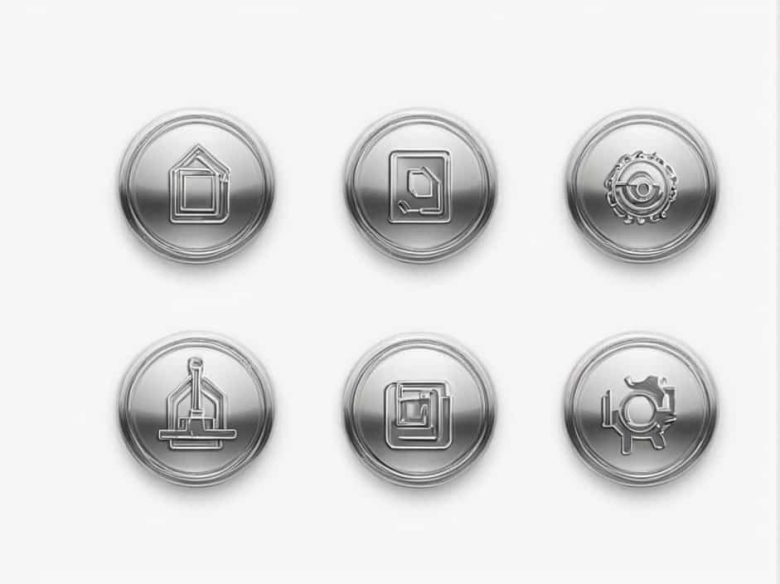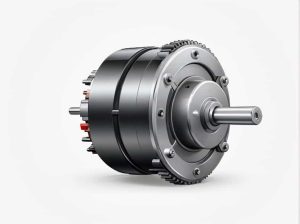In steel structures the slenderness ratio is a crucial factor in determining the stability and strength of structural members. It helps engineers assess whether a steel column beam or other load-bearing element is prone to buckling under compression.
Understanding the slenderness ratio is essential in structural design construction and safety analysis. In this topic we will discuss what the slenderness ratio is how it is calculated its significance and methods to control it in steel structures.
Definition of Slenderness Ratio
The slenderness ratio (λ) is a dimensionless value that represents the relationship between a structural member’s effective length and its radius of gyration. It is expressed as:
where:
✔ ** L_{eff} (Effective Length)** – The unsupported length of the steel member adjusted based on boundary conditions.
✔ ** r (Radius of Gyration)** – A geometric property of the cross-section calculated as:
where:
- ** I ** = Moment of inertia of the cross-section
- ** A ** = Cross-sectional area
A higher slenderness ratio indicates a greater likelihood of buckling while a lower slenderness ratio suggests better resistance to compressive forces.
Importance of Slenderness Ratio in Steel Structures
The slenderness ratio plays a vital role in steel design and construction. Its importance includes:
✔ Predicting Buckling Behavior – Helps determine whether a member will fail due to buckling before reaching its yield strength.
✔ Optimizing Material Usage – Ensures efficient use of steel reducing unnecessary weight and cost.
✔ Enhancing Structural Stability – Maintains the integrity of steel frames and columns under compression.
✔ Complying with Design Codes – Meets international standards such as AISC Eurocode and IS 800 for safe construction.
Factors Affecting Slenderness Ratio
Several factors influence the slenderness ratio of a steel column or beam including:
1. Effective Length of the Member
✔ The longer the unsupported length the higher the slenderness ratio.
✔ Proper bracing and support reduce the effective length minimizing buckling risks.
2. Cross-Sectional Shape and Size
✔ A larger radius of gyration (r) results in a lower slenderness ratio improving stability.
✔ Shapes like I-beams hollow sections and box girders offer better buckling resistance.
3. Type of Load and Support Conditions
✔ Pinned fixed or free-end conditions influence the effective length factor ( K ).
✔ Axial vs. eccentric loading affects buckling behavior and critical stress levels.
4. Material Properties
✔ Steel with a higher yield strength can withstand greater loads before buckling.
✔ Structural steel grades such as ASTM A36 A572 and A992 have different buckling characteristics.
Slenderness Ratio Limits in Steel Design
To prevent premature buckling design codes specify maximum slenderness ratio limits. Some common limits include:
✔ Columns under axial compression – Generally limited to λ ≤ 200 in structural applications.
✔ Tension members – Recommended λ ≤ 300 to minimize lateral instability.
✔ Bracing and secondary members – May allow higher slenderness ratios depending on design requirements.
Effects of High Slenderness Ratio
A high slenderness ratio can lead to serious structural problems such as:
✔ Buckling Failure – A slender column can buckle under compression even if it has not reached its material yield strength.
✔ Reduced Load-Carrying Capacity – Higher slenderness means lower critical buckling load.
✔ Increased Deflections and Vibrations – Can lead to excessive sway and instability in tall structures.
✔ Safety Risks in Construction – Slender members may fail suddenly posing hazards during fabrication and erection.
How to Control and Reduce Slenderness Ratio
To ensure structural stability engineers use various techniques to reduce the slenderness ratio in steel structures:
1. Reducing Effective Length
✔ Use bracing systems (diagonal bracing shear walls) to shorten unsupported lengths.
✔ Properly design connections and restraints to improve stability.
2. Increasing Cross-Sectional Area
✔ Use wider flanges or deeper sections to increase radius of gyration (r).
✔ Consider box sections or built-up sections for improved buckling resistance.
3. Using Stronger Steel Grades
✔ Higher-strength steel materials reduce the risk of early buckling.
✔ Choosing steel grades like A572 or A992 allows thinner members without compromising strength.
4. Controlling Load Application
✔ Avoid eccentric loading that creates additional bending stresses.
✔ Ensure uniform axial loading to prevent secondary buckling effects.
Slenderness Ratio in Different Steel Structures
The concept of slenderness ratio applies to various types of steel structures including:
1. Steel Columns
✔ In high-rise buildings columns must have a low slenderness ratio to resist buckling.
✔ Using moment frames and composite sections improves buckling strength.
2. Beams and Trusses
✔ Beams with a high slenderness ratio require lateral bracing to prevent lateral-torsional buckling.
✔ Truss members are designed with appropriate bracing to control slenderness.
3. Bridges and Industrial Structures
✔ Long-span bridges use box girders to maintain low slenderness ratios.
✔ Transmission towers and cranes use latticed structures to minimize instability.
The slenderness ratio in steel structures is a key parameter that determines buckling resistance and structural stability. It is defined as the ratio of effective length to radius of gyration and is influenced by member length cross-sectional properties and material strength.
A high slenderness ratio increases the risk of buckling failure while a low slenderness ratio ensures better stability and load-carrying capacity. Engineers can control slenderness through bracing optimized cross-sections stronger materials and proper load application.
By understanding and managing the slenderness ratio designers can ensure safer and more efficient steel structures from high-rise buildings to bridges and industrial facilities.



